Federal Guidelines Just Might Tell Americans to Put Down That Cheeseburger
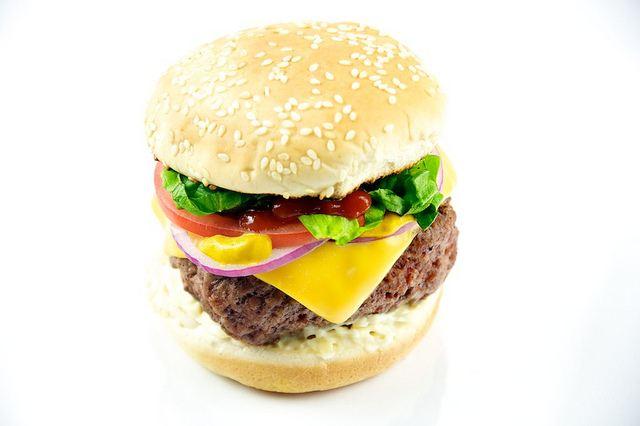

The federal government just may recommend that Americans eat less meat when new guidelines are released in the fall. The Dietary Guidelines Advisory Committee has outlined recommendations that include reducing red meat and processed meat consumption and eating more fruits and vegetables.
The 500-page report suggested that a “healthy dietary pattern is higher in vegetables, fruits, whole grains, low- or non-fat dairy, seafood, legumes, and nuts; moderate in alcohol (among adults); lower in red and processed meat; and low in sugar-sweetened foods and drinks and refined grains.” In other words, a healthy diet should consist of more plant-based foods than meat. The report stated that “higher intake of red and processed meats was identified as detrimental compared to lower intake.”
Note that the report is not suggesting that Americans adopt a vegetarian or vegan diet. While those diets work for some people, they don’t work for others. I tried being a vegan for a short period of time. I just couldn’t stick with it. I adopted a mostly vegetarian diet for years, but realized I missed eating certain ethnic foods. The key is to find what works for you and eat more fruits, vegetables and whole grains while limiting red meat and processed meat. It’s called a balanced approach to a healthy diet.
Meat consumption is incredibly high in the U.S.
Meat consumption in the U.S. has almost doubled in the last century, and Americans are among the top per-capita meat eaters on the planet, according to the United Nations' Food and Agriculture Organization (FAO). The average Americans eats three times more meat than the global average. That’s sure is a lot of steaks and cheeseburgers.
While meat consumption has increased, so have obesity rates. Over a third (34.9 percent) of American adults are obese, the Centers for Disease Control and Prevention (CDC) estimates. A number of health conditions are associated with obesity, including heart disease, stroke and type 2 diabetes. Obesity is costly for the health of Americans and the health industry: The estimated annual medical cost of obesity in the U.S. was $147 billion in 2008. The medical costs in 2008 for obese people was $1,429 higher than for people at a normal weight. Studies have linked high meat consumption to obesity and even a higher mortality rate.
The environmental costs of high meat consumption
Health costs are not the only ones associated with high meat consumption. It also comes with environmental costs, including increased greenhouse gas (GHG) emissions. Agriculture in the U.S. accounts for 9 percent of GHG emissions and worldwide accounts for almost 15 percent of GHG emissions.
A chapter in the Dietary Guidelines Advisory Committee report links the average U.S. diet with increased GHG) emission. “Current evidence shows that the average U.S. diet has a larger environmental impact in terms of increased [greenhouse gas] emissions, land use, water use and energy use,” the report states. “This is because the current U.S. population intake of animal-based foods is higher and plant-based foods are lower.” The chapter concludes that Americans should eat a diet “higher in plant-based foods” and “lower in animal-based foods.”
High meat consumption also means more water is used to grow crops for animal feed. An estimated 27 percent of humanity’s water footprint is for meat and dairy production. California is well into the fourth year of the state’s worst drought on record. So, by eating less meat we can help the environment by reducing our carbon and water footprints. It's not a bad trade, and it is something even meat lovers can do.
Image credit: Flickr/The Culinary Geek
Democrats and Republicans Agree: Campaign Finance Needs Reform
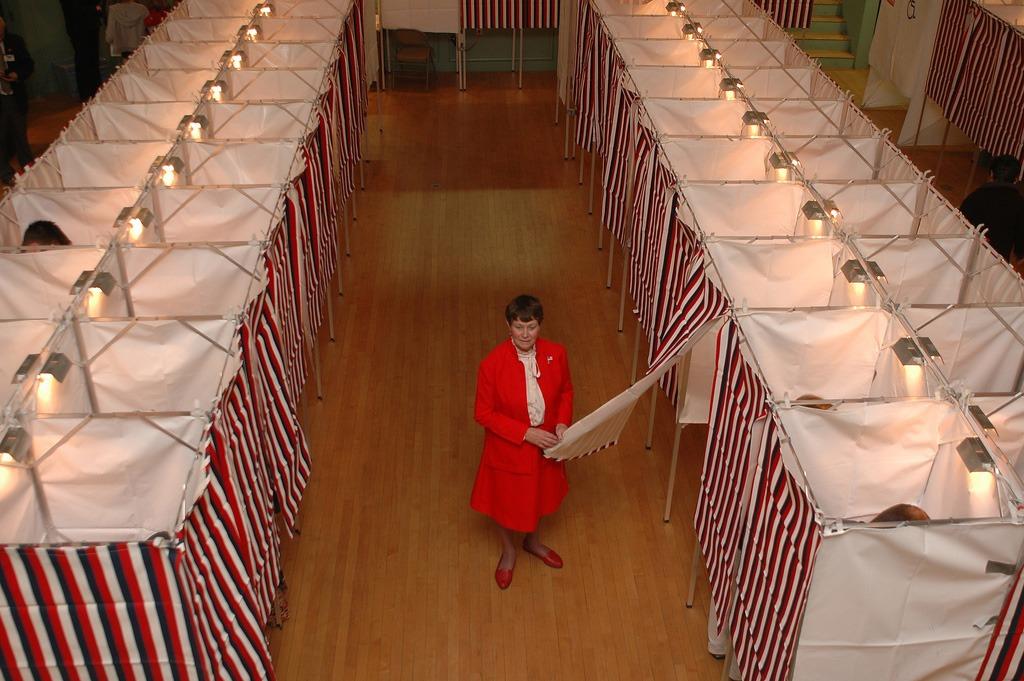

With the 2016 election approaching, spending records are poised to be shattered once again by the prospective Democratic and Republican nominees. A recent poll issued by the New York Times found that Americans of both major parties agree that measures should be taken to restrict the influence of wealthy donors in such important races.
This comes five years after the infamous Citizens United v. FCC decision that essentially gave companies and unions a pass to spend unlimited amounts of money on ads and other political tools, allowing these entities to either advocate or bash candidates, thus impacting elections greatly. Although companies are still banned from donating however much they want to any particular individual running for office, they are allowed to create super PACs that fundraise for ads supporting whoever they deem worthy.
The Citizens United ruling has since drawn a lot of controversy, leaving the public upset about the unregulated money being spent on campaigns and certain politicians upset that these races are influenced from large companies and not the values of the politician.
Republican leaders in Congress are working to block legislation that requires the disclosure of the “dark money” that siphons into these super PACs. According to the poll, a wide majority of Republican voters favor an overhaul of how political campaigns fundraise.
The chair of the Federal Election Commission, the group responsible for overseeing corruption costs coming from campaigns, said the agency is “worse than dysfunctional” and ultimately is powerless to halt any missteps in the 2016 campaign. More than half of America shared the FEC’s reluctance and doubt in the survey.
While Democratic candidates are pushing for campaign finance reform, they also understand its importance in the role of getting elected as the leader of the free world. The leading super PAC supporting former U.S. Secretary of State and presidential candidate Hillary Clinton hopes to raise twice as much as Democratic groups contributed to President Barack Obama in his re-election campaign.
The 2016 election will likely go down in history, much like the campaigns in 2012, 2008, 2004 and so on, for being the most expensive election to date. The Hill estimated $2.6 billion was spent on the 2012 election. Obama spent $683 million while the Democratic Party propelled him to victory behind outside groups’ $1.1 billion, according to FEC filings. Former Massachusetts Gov. Mitt Romney spent $433 million with outside groups contributing $1.24 billion for his campaign trail.
And, believe it or not, the price tag is expected to be even bigger for next year’s election. The Hill reported that, according to top fundraisers, the 2016 election could reach as much as $5 billion. With 14 players already throwing their hats in the ring -- four Democrats and 10 Republicans -- super PACs and individual donors are busier than ever trying to deliver support to their chosen nominee. The 10 Republicans officially bidding for president doesn’t include two top fundraising moguls, former Florida Gov. Jeb Bush and New Jersey Gov. Chris Christie, who have both hinted at a run for office while piling up money on the side.
Forty-six percent of respondents to the New York Times poll said the United States needs to “completely rebuild” the way political campaigns are funded. In opposition, just 13 percent said only minor changes are needed. The wealthiest Americans have the largest political say because of their spending powers, but the citizens of both affiliations are fed up with being misrepresented by powerhouse companies.
More than 4 in 5 Americans say money plays too large a role in political campaigns, the poll revealed. Campaign finance reform won’t happen overnight, but public outcry could hasten the process as the 2016 presidential race catches fire.
Image credit: Flickr/nshepard
Blue Carbon Rising


By Dick Kempka
It’s likely most people have never heard the term blue carbon. When carbon is stored in coastal wetland ecosystems, including tidal marshes, mangroves and seagrass, it becomes known as blue carbon. Amazingly, blue carbon ecosystems remove four times more carbon dioxide from the atmosphere, per acre, than forests. This means healthy coastal wetlands are considered a carbon sink, and restored wetlands are a largely unrealized solution to the problem of increasing worldwide carbon dioxide levels. In fact, on a per-acre basis, coastal habitat restoration and conservation can provide among the greatest climate benefits compared to forest or all other land-use projects.
Last month at the 2015 Blue Carbon Network event in Silver Springs, Maryland, a group of scientists, policymakers and marketers gathered to discuss how to increase exposure for coastal wetlands — areas that are not only great carbon sinks, but also critically important for ecological and economic value. Globally, coastal wetlands are being lost at an unsustainable rate each year; estimated at 1 to 7 percent, according to Restore America’s Estuaries, an organization whose work is dedicated to the protection and restoration of U.S. bays and estuaries. Unfortunately, if this rate continues, all coastal wetlands may be lost in less than 100 years.
The first Blue Carbon Network workshop was initiated to identify a national network of people and organizations conducting work around blue carbon science, markets, management and policy. The objective of the network is to understand the gaps and challenges for blue carbon efforts in science, policy and environmental credit markets -- helping them move toward more concrete action strategies in 2015 and beyond. Much restoration work is being done with seagrasses in the northeast; peatland in the eastern seaboard; as well as coastal wetlands in the Lower Mississippi Valley, California and Puget Sound. However, restoration efforts have not kept up with habitat loss.
Similar to forests, wetlands store carbon in above and below ground vegetation, but primary carbon storage in wetlands is within soils. Carbon accumulates annually and can be stored for centuries within healthy wetlands; the majority of which is stored in the first meter of soil. Three prominent wetland types globally are Seagrasses (5.10 metric tons of carbon dioxide equivalents per year [tCO2e/ha/yr], Salt Marsh (8.0 tCO2e/ha/yr), and Mangroves (8.3 tCO2e/ha/yr). By comparison, tropical forests are below 0.50 tCO2e/ha/yr).
The Blue Carbon Network also advocates for coastal wetlands restoration projects with the leading greenhouse gas protocols and registries, to illustrate that healthy wetlands need to be included in the growing carbon market. Carbon and other environmental markets (e.g. water quality trading) can assist in financing the preservation and restoration of these coastal habitats—areas of vital importance to the U.S. for both environmental and international commerce reasons.
Presently there are both compliance and voluntary carbon markets in the U.S. The largest compliance market is an active cap-and-trade program located in California and managed by the California Air Resources Board (ARB). The California market is part of a statewide effort to reduce GHGs and promote clean technology. In this system, companies with emissions greater than 25,000 tCO2e/year are regulated. The primary compliance instrument are allowances—permits for covered entities to emit one ton of carbon dioxide issued by the state. Covered entities are also allowed to use credits generated in non-covered sectors, called offsets, for up to 8 percent of their compliance liability. Land-use types, such as forestry and rice, are soon-to-be or have already been approved as part of this regulated system. ARB’s plan is to approve additional land-based offset types in the future; with a potential fit for Coastal Wetlands Restoration. Acceptance of wetlands in this regulated system would likely spur much needed coastal restoration work.
Voluntary carbon markets encourage both corporations and individuals to offset their GHG emissions voluntarily, without regulation. Standards or protocols have been established by independent organizations that ensure environmental efficacy for the credits issued. Examples of leading voluntary standards are the American Carbon Registry (ACR), Verified Carbon Standard (VCS), and Climate Action Reserve (CAR). Each of these standards establish GHG accounting rules for approved project types. Projects must meet specific criteria in order to be awarded or issued carbon credits. Presently, one of the only approved wetland restoration project types or methodologies is the Restoration of Degraded Deltaic Wetlands of the Mississippi Delta.
However, there are other wetland project types being developed under VCS and ACR. The new ACR method is designed to fit California wetland types, and is the first protocol to specifically target at-risk wetlands in the Golden State. Eligible management activities to conserve carbon stocks in threatened wetlands include: Conservation of Intact Wetlands, Rewetting of Drained Organic Soils, and Restoration and Creation of Vegetated Wetlands. The identification of these wetland management activities and emergence of associated GHG standards are an important first step in the use of carbon markets to address rapid wetlands loss and climate mitigation.
One of the more prominent Blue Carbon studies conducted was located in the Snohomish Estuary. This area was selected because the estuary system is representative of the Puget Sound and broader Pacific Northwest Region in terms of land use management issues and geomorphology. The study’s hypothesis was that wetlands in this region will prove restoration can offer a relatively high level of resilience to sea level rise, and also act as an effective sink for carbon sequestration. This is one of the first assessments of carbon fluxes over many decades for historic drained wetlands.
The Snohomish Estuary findings indicated that historic land use change resulted in estimated emissions of 4.5 million tons of carbon (MtC), of which 2.8 MtC was a result of clearing forested wetlands and 1.7 MtC from draining soils. Of the nearly 12,000 acres of converted or drained wetlands, almost 3,500 acres are currently being restored. Full estuary restoration would result in additional carbon stocks of 8.9 million tons of CO2 sequestered over 100 years — equal to the one year of emissions from about 1.7 million cars. Carbon rates on two restoration sites ranged from 0.9 tCha/yr to 3.52 tCha/yr, which is quite high. The next step would be to deliver a carbon project in this geographic region that will produce credits under a new VCS method; eventually expanding with similar projects throughout the region and beyond.
The Blue Carbon Network hopes to illustrate the importance of carbon finance for wetlands in the rapidly diminishing coastal zone. The hope is that Blue Carbon projects will be embraced broadly due to the vital ecosystems services provided; including flood protection, fish and wildlife habitat, improved water quality, jobs and many other economic benefits. Blue Carbon’s role in supporting climate change adaptation and protection of coastal communities cannot be overstated.
Image credit: Flickr/Internet Archive Book Images
Dick Kempka is the Chief Commercial Officer for The Climate Trust
Bringing Sustainable Water, Sanitation and Hygiene to the World's Poorest
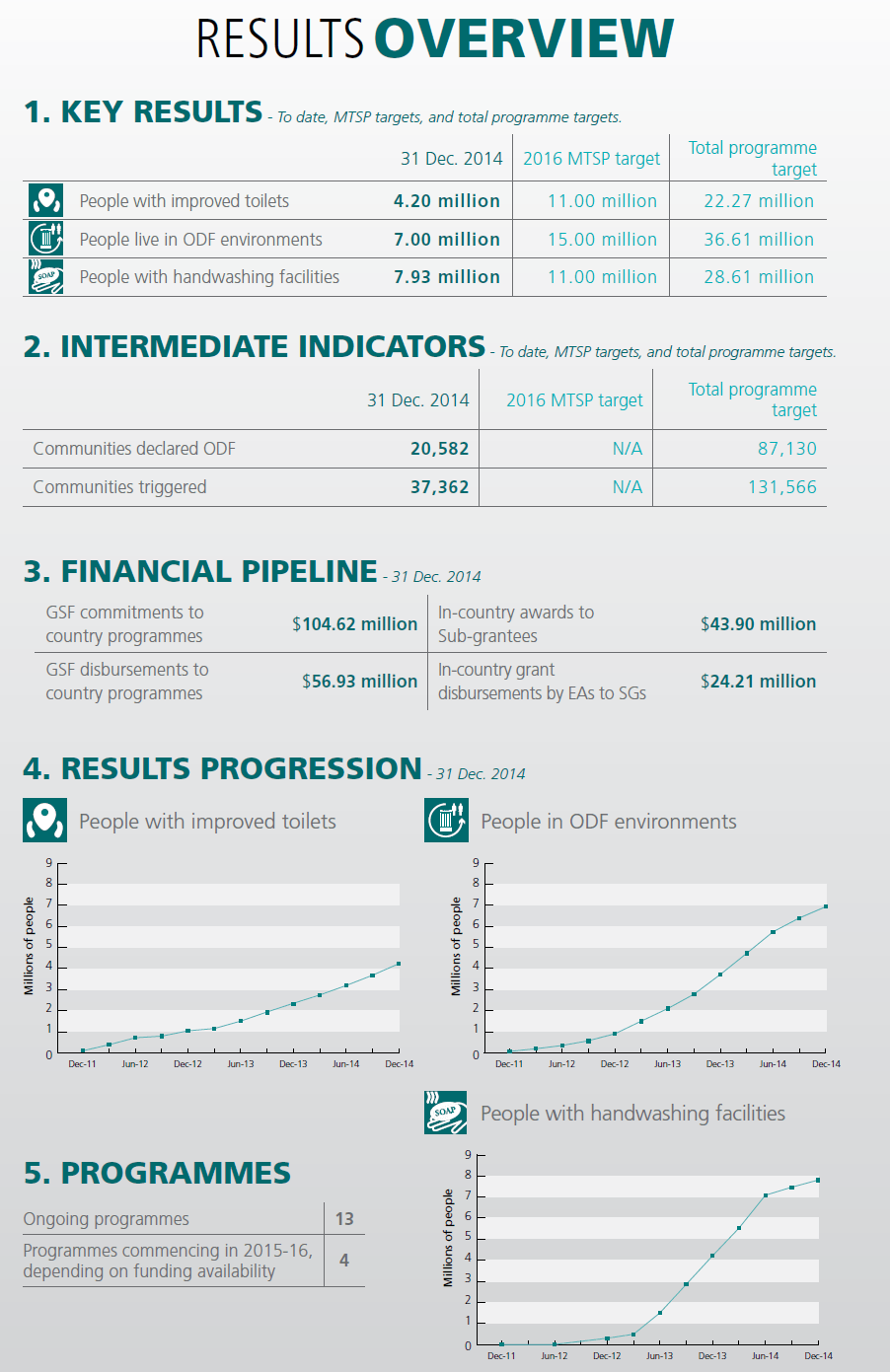

Since 1990, the Water Supply & Sanitation Collaborative Council (WSSCC) has worked with NGOs, local communities, and national and local governments to bring sustainable water supplies, modern sanitation and hygiene practices to the world's poorest and most remote communities. In its latest progress report, the council reveals that with support from the Global Sanitation Fund (GSF) national governments and their local partners in 13 countries have provided some 4.2 million people with improved toilets.
In addition to improving community and environmental health and sustainability, bringing sustainable water supplies, modern sanitation and hygiene to the world's underserved and poorest communities empowers them, opening up prospects of greater socioeconomic opportunities. Critical to realizing sustainable development's potential, the initiatives the WSSCC organizes are integral to achieving to nearly all eight of the U.N. Millennium Development Goals (MDGs). These include reducing child mortality, improving maternal health and ensuring environmental sustainability.
GSF support has ended the practice of open defecation among 7 million people living in more than 20,500 communities. In addition, handwashing facilities have been provided for some 8 million, the U.N. organization highlights in its latest progress report. The results, commented Chris Williams, WSSCC executive director, “prove that we are moving closer to our vision of a world where everybody has sustained sanitation and hygiene, supported by safe water. This is a crucial step towards achieving better health, reducing poverty and ensuring environmental sustainability for the most marginalized people in the world.”
Water, sanitation and health
It's estimated that no less than 2.5 billion people – 40 percent of the global population – do not have access to decent sanitation. More than 1 billion reportedly defecate in the open, exposing themselves and their communities to various risks. Among them is diarrheal disease, which WSSCC explains, “is a leading cause of malnutrition, stunting and child mortality, claiming nearly 600,000 under-5 lives every year.”
Formed in 1990 by the U.N. to succeed the International Drinking Water Supply and Sanitation Decade, WSSCC has since “served as an international coordinating body to enhance collaboration in the water supply, sanitation and hygiene sectors, specifically in order to attain universal coverage for poor people around the world.”
With voluntary contributions from state, private and public sector sources, WSSC has assembled and coordinates the activities of a global network of water, sanitation and health (WASH) professionals. The GSF is its principal project funding mechanism.
WSSCC highlights a few key results in the executive summary of its latest progress report:
- 4.2 million people with improved toilets, up from 2.7 million in December 2013;
- 7 million people in more than 20,500 communities now live in cleaner environments free of open defecation, up from 3.7 million in 14,400 communities in December 2013;
- More than 37,300 communities have participated in demand creation/triggering activities, up from 24,500 in December 2013.
Successfully assembling and managing an organization and carrying out a worldwide initiative of WSSCC's scope and scale is no mean feat. Its latest results testify to the progress it is achieving.
The GSF reported a nearly 90 percent increase in the number of communities across 13 countries in Africa and Asia that are now “open-defecation free” between 2013 and 2014 alone. The number of people that now have access to improved toilets in these countries rose 55 percent.
“In Uganda, there are now more than 1.4 million people living in open-defecation free (ODF) environments, thanks to GSF-funded activities, and close to 3 million people have been reached by hygiene messages as a result of decentralized local government intervention,” the council highlights.
“In Madagascar, over 1.3 million people are now living in ODF environments – in all 22 of the countries regions – and India’s GSF-supported programme has over 782,000 people with handwashing facilities.
“Access to improved sanitation has to be a sustainable reality for every person in the community, regardless of age, gender or disability, in order for the health and other benefits to be enjoyed by all,” GSF program director, David Shimkus, was quoted as saying. “This report shows that GSF-supported programs are making major strides in achieving improved sanitation and hygiene for the most vulnerable, and all stakeholders will continue to work together to ensure such progress continues.”
Image credits: WSSC, GSF
British business calls for climate action to build greener economy


Over 75 UK businesses including Willmott Dixon, Cisco, E.on, John Lewis Partnership, SSE, and BT have called on the government to take decisive action to combat climate change and build a low-carbon economy.
An open letter from the firms to Prime Minister David Cameron and published in today’s Financial Times calls on the new administration to seek a strong global climate deal in Paris in December which limits temperature rises to below 2°C, set an ambitious 5th carbon budget to drive forward UK emissions reductions (covering period 2028-32) and establish a long-term framework for investment in the low-carbon economy, giving industry much-needed clarity over what is expected in terms of low-carbon development, and boost the confidence of green investors.
Other signatories include Dong Energy, Johnson & Starley, Trillion Fund, Infinergy, Tesco, ARUP and Instagroup.
WWF-UK is leading calls for a new approach to governance that places low-carbon growth and the responsible management of natural capital at the heart of economic policy. WWF-UK Chief Executive David Nussbaum commented: “British business is ready to step up. From construction and energy to retail, the best British enterprises know that green growth is the future. They take on board that it’s no longer credible to base a sustainable economy on fossil fuels, so the Government should put us on track for a low-carbon world.
“As we approach international climate talks, Britain should be a global champion for change, but a lack of consistent long-term policies sends a confusing message to business and undermines our attractiveness to investors. The Prime Minister should send a clear message that the only way forward is a green economy, and support forward-looking firms that want to build a clean economy.”
Julia Groves, chief executive of Trillion Fund, a renewable energy crowdfunding platform, added: "Protecting the pound in people's pockets is not at odds with supporting low carbon energy generation. Peer-to-peer lending and the maturity of energy generation technologies have come together to create an exciting opportunity for ordinary people looking for a decent return and potentially, to offer cheaper bills for locals too.
"Regular lenders and investors can sit alongside the Green Investment Bank, pension funds, private equity and banks as direct stakeholders in a clean future, and with the right support, this model can drive competition in energy and in finance, for people, planet and profit."
Picture credit: www.dreamstime.com
“Clothes the Loop” Recycling: The North Face Way
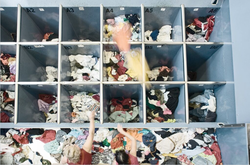

Submitted by Kelly Eisenhardt
Approximately 12 million tons of textile waste go into landfills each year in the U.S. With its recently expanded program called Clothes the Loop, The North Face is making great strides to reduce textile waste by setting an ambitious goal of collecting 100,000 pounds of apparel and footwear in the year 2015.
(Photo credit- I:CO)
I had the opportunity to get the details on Clothes the Loop with Adam Mott, who oversees the Corporate Sustainability program at The North Face. He helps develop and integrate the sustainability strategy across the entire business by focusing on the development of environmentally responsible products, implementing greenhouse gas emission management and reduction programs, and by building community engagement programs based on the elimination of operational waste.
What is the Clothes the Loop project and why is it important?
Our heritage at the North Face is built on a love of exploring the outdoors and that means we’re passionate about protecting it.
With Clothes the Loop (https://www.thenorthface.com/about-us/responsibility/product/clothes-the-loop.html), we aim to provide an easy solution for customers to recycle their used apparel and footwear and to keep these items out of the landfill by giving them a new life. By championing this initiative, we are also protecting natural resources.
The program is very simple. Clothes the Loop accepts used apparel and footwear from any brand in any clean and dry condition. This includes anything from t-shirts and beanies to hiking boots and sandals. Items collected through the Clothes the Loop program at The North Face retail locations are sent to a recycling center. Once there, items are sorted into more than 400 categories and designated either to be worn again, repurposed, or recycled into raw materials. The materials are then used again for other products such as insulation, carpet padding, furniture stuffing and even fiber for new apparel and footwear.
Not only is keeping items out of the landfill important from a waste perspective, it also has a major impact on reducing greenhouse gas emissions. For every 2.3 million tons of textiles recovered, it’s the equivalent to removing 1 million cars off the road. In this way, the program enables consumers to actively contribute to climate protection.
How does the Clothes the Loop project align with The North Face’s sustainability goals?
Our sustainability mission is to protect our outdoor playgrounds and communities through environmentally and socially responsible products and business practices. We bring the passion we have for the natural world into our product design and responsible business operations.
Clothes the Loop supports our commitment to reducing waste and giving communities an opportunity to contribute to a healthier planet. We believe in addressing every stage of a product’s lifecycle from design to disposal. All The North Face products have a lifetime warranty; we focus on building products that last a lifetime so that our consumers buy fewer products over time, thereby reducing impacts on the environment.
What type of resources has your company committed to ensure the program’s success?
We piloted the program in 10 stores in 2013, expanded to 27 stores in 2014 and now in 2015 we are in all 83 The North Face retail and outlet stores in the U.S.
What metrics and baselines are being used and how will The North Face track progress?
We have set an ambitious target of collecting more than 100,000 pounds of used apparel and footwear through Clothes the Loop in 2015. We are asking all our stores to highlight this goal and encouraging people to take part. It’s a simple step in reducing overall impact.
Have you formed partnerships with other retail companies or industry groups to accelerate the program?
The North Face decided to partner with I:CO because they provide a convenient way to recycle unwanted clothing and shoes, preserving valuable resources and keeping waste out of landfill. Through their sorting infrastructure, I:CO has achieved a 98% diversion rate from landfill. Their goal is to reach 100% by 2020.
Recycling old apparel and footwear also supports one of our longstanding partners and preserves our outdoor playground. All proceeds from Clothes the Loop go to The Conservation Alliance. This funds community-based campaigns to protect wild places for their habitat and recreation values. The North Face is a founding member of the Conservation Alliance, which recently celebrated 26 years of operation.
What one thing did you discover during the program that was unexpected?
Over the past two years, we have received hundreds of emails from customers requesting Clothes the Loop in their town or city. This has been exciting for us to hear how many people are interested in participating.
Are you seeing the results you thought you would?
We have seen fantastic results with this program to date and as mentioned, have received hundreds of requests from customers to expand it. We are pleased with the results and will continue to reward customers for recycling. We will have an additional incentive later this year for people who participate including bonus rewards within our loyalty program – VIPeaks.
How can consumers be part of the program?
This program is all about consumers. Instead of tossing outworn, unwanted apparel and footwear in the dump, customers can bring in gear from any brand in any clean, dry condition and give these materials a new life. Deposited items are sent to I:CO reprocessing facilities where they are hand sorted and designated to be resold, broken down for reuse or recycled into new raw materials. In return for helping to reduce apparel and footwear waste, customers receive a voucher for $10 off a purchase of $100 or more.
With 12 million tons of textile waste going into landfills in the U.S. each year, that averages out to approximately 70 pounds per person. It is time to step up and take action. We encourage everyone to consider what they do with used footwear and apparel. Whether you live near a The North Face store, outlet or another service provider, we hope consumers seek out one of the many options to help get textiles out of our landfills.
MillerCoors Announces Zero Waste-to-Landfill Brewery and Campus
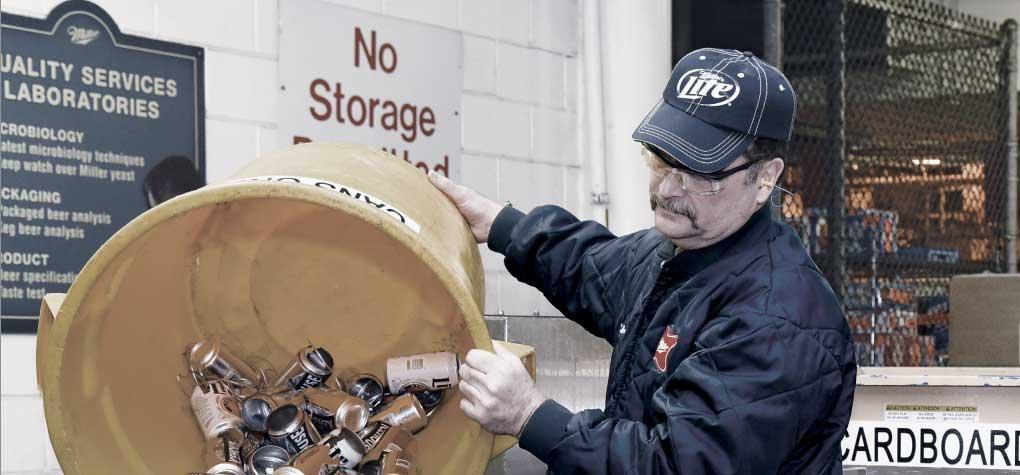

MillerCoors brewing company announced today that both its corporate headquarters and its Milwaukee brewery are now landfill free. This is the seventh of the company’s eight major breweries to achieve this status and the first complete campus (brewery plus offices) to get there.
“We’re proud to achieve landfill-free status in the place we’ve called home for more than 160 years," Fernando Palacios, Executive Vice President and Chief Integrated Supply Chain Officer, said in a press release. "MillerCoors remains committed to protecting local resources, lessening our impact on the environment and being a good neighbor by continuing to look for ways we can brew beer more sustainably, including eliminating waste sent to landfills.” Palacios affirmed the fact that the company “remains committed to protecting local resources, lessening our impact on the environment and being a good neighbor by continuing to look for ways we can brew beer more sustainably, including eliminating waste sent to landfills.”
“As we look ahead to 2020, we are focused on building upon our heritage to brew a sustainable future,” said Kim Marotta, MillerCoors Director of Sustainability. “We’ve updated our sustainability strategy to reflect our past successes and to challenge ourselves in new ways.”
When I spoke with Marotta last week as part of our ROI of Sustainability series, she told me that they plan to get the whole company to landfill free status by 2020. That includes their Fort Worth brewery and their metal and glass manufacturing facilities such as Rocky Mountain Metal Container, LLC, a metal beverage container and end manufacturing facility in Golden, Colorado jointly owned by MillerCoors and Ball. She also mentioned that the zero waste effort has been a major focal point for employee engagement. As the result of this effort, the company has eliminated 65 tons of waste that was being sent to the landfill each month, saving money while reducing the company’s environmental impact.
Most of our conversation focused on their various water reduction efforts. Since 2008 the company has reduced water consumption within their brewery operations by 1.4 billion gallons and has identified opportunities to conserve far more than that in the agricultural supply chain.
The residual waste, about 15 tons per month that cannot be reused or recycled, is sent to a waste-to-energy facility in La Crosse, Wisconsin, a practice that is followed company-wide. Overall, the company reduced landfill waste by 448 tons last year.
The announcement coincides with the release of MillerCoors' 2015 Sustainability Report entitled, Great Beer, Great Responsibility which highlights their “continuing quest to brew a sustainable future.” Many of the watershed projects that Marotta and I discussed are described in more detail in there. They also talk about the solar installation at the Irwindale brewery that we wrote about in January.
Image credit: MillerCoors
How Unilever Converges Doing Good and Strong Performance
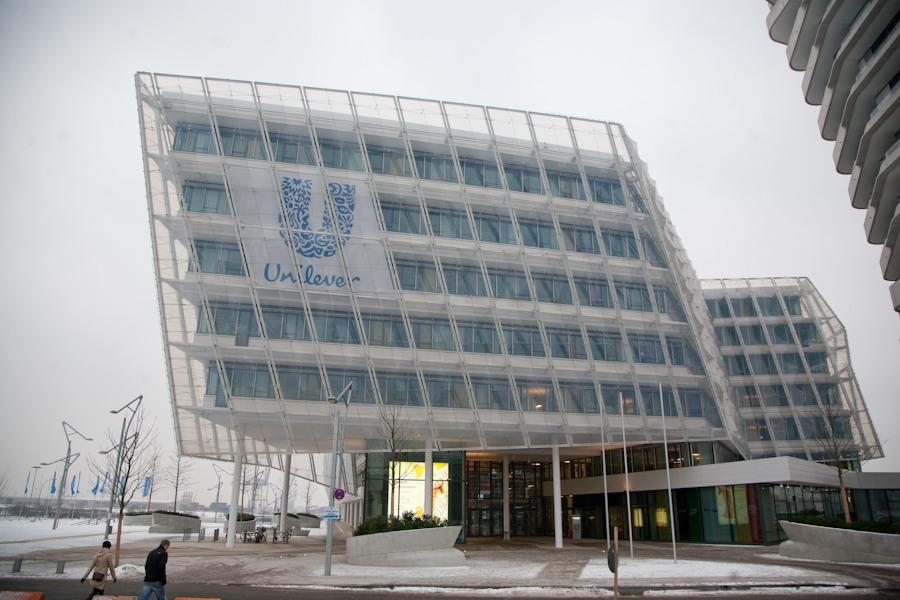

This article is part of a series on “The ROI of Sustainability,” written with the support of MeterHero. MeterHero helps companies and organizations offset their water and energy footprints through consumer engagement. To follow along with the rest of the series, click here.
An old paradigm of business assumed profits must be sacrificed to help people and the planet. Now, some companies have experienced a paradigm shift, where people, profits, and the planet are inseparable. Unilever is an example, with sustainability shaping its actions and the way it communicates its brand, fostering trust in the marketplace. As a company that reaches 2 billion consumers annually, has 172,000 employees, and 76,000 suppliers, this is a huge undertaking with an enormous global impact.
Efforts to mitigate risk and ensure security in the supply chain are shaping corporate behavior, spurring sustainable innovation. Unilever initiated drip irrigation projects for soybean farmers that save water and reduce the need for pesticides. Its factory eco-efficiency programs save €200 million annually while creating 1,000 jobs. Achieved in 2014, there are now 241 zero-waste factories in 67 countries, resulting in some former waste streams being used for manufacturing building materials or as compost. Now 55 percent of Unilever's agricultural raw materials are sustainably sourced, with a 100 percent goal by 2020. Paul Polman, Unilever's CEO sees clear value in a triple bottom line approach to business.
"In a volatile world of growing social inequality, rising population, development challenges and climate change, the need for businesses to adapt is clear, as are the benefits and opportunities," he says. "This calls for a transformational approach across the whole value chain if we are to continue to grow."
There are numerous examples of Unilever using its branding and marketing reach to create a positive social or environmental impact, with a tangible benefit on sales. In Argentina, Unilever partnered with Carrefour to educate consumers on ways to save energy when doing laundry, resulting in a boost in market share and a 25 percent increase in sales. The Lifebuoy brand aims to reduce the spread of disease by changing the hand-washing behavior of 1 billion consumers. Dove's self-esteem program works with girls and women to promote a positive body image by changing the conversation around female beauty.
These campaigns are a win-win, both for humanity and sales and the efforts are paying off. Unilever reports that its brands with a social mission, such as Ben & Jerry's, Lifebuoy, and Dove are achieving above average growth.
With such initiatives, you might expect Unilever's CSR department to be working overtime. In fact, the department disbanded several years ago because it was seen as redundant. The company's new approach embeds sustainability in all aspects of the business, making a separate department disjointed and unnecessary.
When taking a step back, Unilever's potential to shape the world is tremendous, and ideally this will be harnessed in a positive way. For example, Dove's campaign produced the most popular viral video ad at that time, now with 65 million views on YouTube alone. Unilever's vast resources and reach can be used to promote human health, boost sustainable farming practices, and mitigate water shortage issues. In many cases the company has chosen a triple bottom line approach, but there are areas where it has fallen short.
Unilever is criticized for opposing GMO labeling and the giant poured money into efforts to defeat a California ballot initiative for GMO food labeling. Oddly, its subsidiary Ben & Jerry's is the poster child for food safety and has been leading the way in creating GMO-free products. Oxfam uncovered unsavory labor practices in a Vietnamese factory, but Unilever since agreed to improve practices. Unilever's greenhouse gas emissions have decreased by a meager 4 percent across the value chain since 2010, but sales increased over the same period indicating that some progress has occurred.
Many of us get skeptical when we hear of a big company doing good and wonder if it is more of a green-washing campaign than a genuine paradigm shift. It does seem Unilever is sincere in seeing the business opportunity in CSR and is successfully benefiting the bottom line by mitigating risk and creating trust. Of course no CSR initiative is impeccable, and a "business as usual" mentality may sneak in at times as the new paradigm takes hold.
Image credit: Mike Mozart, Flickr
Why Foster Farms is Dropping Antibiotic Use in Chickens


Foster Farms’ announcement last week that it would be dropping the use of antibiotics in two new product lines was expected. The Livingston, CA - based company has been plagued with quality control problems over the past few years that critics, including the Natural Resources Defense Council, have suggested are the result of using human antibiotics in its livestock. So it’s no surprise that the 76 year-old company would develop its own line of organic and antibiotic-free poultry. It just makes sense.
Still, it is often interesting when the media reinterprets the message a press release is intended to impart. Foster Farms’ fanfare about new product releases that include organically raised chickens has so far been broadly ignored by the media, with the exception of the Merced Sun Star, which is published a short drive from Livingston. The company’s claim of becoming the “West Coast leader in antibiotic-free chicken" seems to have gone unnoticed as well. Geography and size count, but only it seems, when they have something to say about a company’s commercial accomplishment.
Instead, recent headlines have chosen to read the news as many consumers would: Foster Farms, which once defended the value of using of antibiotics in its livestock, is dropping its fight.
And it isn’t the first company to give up its endorsement of antimicrobial therapy. In August 2014, Purdue Farms announced that it would be scaling back the use of human antibiotics in poultry. Eight months later, in April 2015, Tyson Foods announced a soft target date of September 2017 for ending its antibiotic regimen. Its announcement came after salmonella Heidelberg had been detected in its products.
At least two of the meat producers have said their changes are the result of the Federal Drug Administration’s voluntary guidelines of 2013, which called for an end to prophylactic antibiotic regimens. But it is reasonable to assume that consumer opinion and consumer trends had a large part in those decisions as well. According to the NRDC, sales of antibiotic-free meats (including beef, pork and turkey) jumped 25 percent in 2010, 2011 and 2012, despite the fact that U.S. consumption of all four types of meat was down. And as of 2013, says research group IRI, antibiotic-free chicken represented almost 10 percent national chicken sales.
The FDA has been roundly criticized for not insisting on a more rapid change in antibiotic use, especially in light of information it has possessed since the 1970s suggesting that the use of such substances in livestock was harmful to humans. According to 2012, data, tetracyclines – the medication responsible for what the FDA commissioner Donald Kennedy predicted in 1977 would one day become a threat to the world’s “linked ecosystem” – now amounts to more than 40 percent of the 31 million pounds of antibiotics fed to livestock in the U.S.
The FDA said in 2013, when it appealed to manufacturers to change the amount of antibiotics it gave livestock that it was calling for industry cooperation, rather than enforcing adherence because it “was the fastest, most efficient way to make these changes.” One wonders if that is legal issues that the FDA was considering at the time of that statement, rather than procedural. In 2001, the USDA was prohibited by the courts from shutting down a plant in Texas after it had been failed salmonella testing in its facilities for the third time.
It seems unbelievable that a federal agency charged with protecting public health could actually have to ponder the legal ramifications of the steps it takes to enforcement. But these days, the laws and strategies to protecting America’s food basket seem to have become just as complicated and confusing as picking out the makings for tomorrow’s dinner.
Image: Wplynn
Six New Companies are Making Your World Better
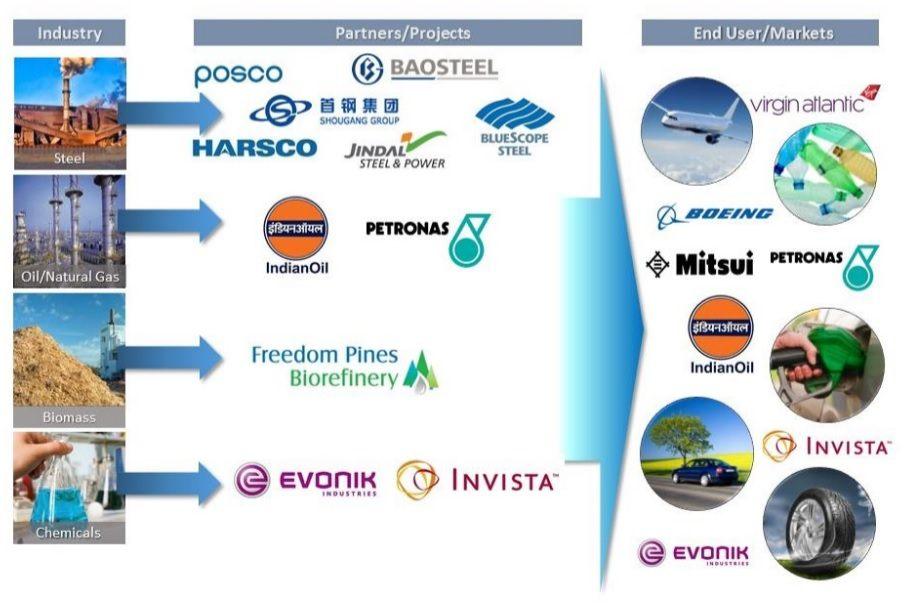

These six companies caught our eyes at last week's Sustainable Brands conference. Here's a rundown of the businesses that are shaking things up and making people smile and dance.
1. Baby Hero
Babies are fresh. Clean. Pure. Except when spitting up, pooping, or eating… so they’re beautiful about 10 percent of the time… when they sleep. Outfits get messy so fast that some parents have resorted to just not putting clothes on their kids which is why there’s an abundance of naked baby pics.But when a baby absolutely has to wear clothes, say for a wedding or birthday party, it should wear Baby Hero clothes.
These clothes are ethically made so you’ll be able to sleep at night. And if the baby is your kid, you’re going to need all the sleep you can get. The manufacturer, Assisi Garments, was founded by Franciscan Sisters as a non-profit rehabilitation program. The employees are underprivileged or disabled individuals. In a generous gesture, the manufacturer used its profits to create an HIV clinic, cancer treatment facility, centers for orphans, and a hospital for people with leprosy.
Second, these clothes are cute. Seeing the adorable sheep onesie will leave you wishing all your friends had triplets so you could buy one for each. The good news is the outfit is way cute. The bad news is you’ll be heartbroken when baby burps brown out its diaper. Side note: If the person having the baby is super special, you can also give the gift of a gourmet meal to the family.
Third, for every Baby Hero item you buy the company will donate a neonatal Survival Kit for a mother and baby in need. So far the company has given away over 1,700 neonatal kits. The kits are given to mothers in rural Pakistan where mothers give birth at home with little or no pre- or post-natal care. The kit allows mothers and babies to ward off infection and help the baby stay warm.
The birth kit includes: 1 bar of soap, 1 clean plastic sheet, 1 sterilized razor blade, 1 string for the umbilical cord, 1 cord clamp, globes, 1 maternity pad, pictorial instructions, and a partridge and a pear tree. An antiseptic to keep the umbilical stump clean. Sunflower emollient to keep a baby’s skin from getting infected and to maintain body temperature. A mylar baby blanket to prevent heat loss. Thermospot stickers to monitor a baby’s temperature. And a click-to-heat warmer to keep a baby warm.
2. YOGO
How many runners have you seen jogging down the street with a yoga mat? Negative 10. The solution? A small and portable yoga mat to use when you’re on the go… enter YOGO. It’s so portable the Co-Founder even ran a half-marathon with the YOGO on his back to show how easy it is to take yoga anywhere and everywhere. You can toss YOGO into a backpack, purse, or suitcase... it can fit anywhere.
The YOGO folds to one quarter the size of regular mats. Two straps keep it rolled when stowed. When unfolded, it’s the same size of a regular yoga pad. It’s made from biodegradable natural tree rubber and stays grippy even when wet (in case you sweat Niagara Falls during hot yoga). The mat folds on itself, just like yoga has you fold yourself, thus creating a deep personal bond with your mat. Also, a mat that folds origami style ensures that it stays clean and free of dirt, sweat and general grossness of the floor (unlike regular roll pads). Whenever you want to wash your own grossness off it, rinse it off in the shower and then hang dry it with its built-in straps.
For every Restoration series mat sold, YOGO plants one tree in Central America. The company also supports Rise Yoga, a yoga and wellness education program for San Francisco public schools.
3. Treedom
I have bad news. Unless you are a duck, every day your routine of living life is destroying the earth and you should do something about it. The good news is it’s a relatively easy fix. Just plant a tree. Or a few trees. Or a forest (if you own a private jet).
Did you ever read the children’s book The Giving Tree? Now you can create a whole forest of Giving Trees. You can even create a kingdom of trees, aka, a Treedom.
But what if I want to plant a new building instead? Too bad.
https://vimeo.com/67573577
Planting new trees is beneficial because trees absorb CO2. Trees preserve the forest, environment, soil, and biodiversity. Trees are gentle and love everyone besides lumberjacks. They make sure landslides and mudslides keep their fun under wraps. And trees generate income for locals who sell the tree's fruit for income. In fact, a mango tree can produce up to 6 tons of fruit per year. So, planting trees doesn’t just help the environment, it also helps people overcome poverty.
Treedom offers twelve trees to choose from. You can choose to plant trees that grow apples or oranges, or stars or hearts (according to this chart).
The tree will be planted somewhere in the world by local farmers and will be photographed, geolocated, and published on your profile. You can also gift a tree by buying it and dedicating it to a special person.
In the past three years the company has planted over 180,000 trees in Senegal, Cameroon, Malawi, Argentina, Haiti, Kenya, Italy, and Mars (j/k, scratch Mars). You can plant a baobab tree or a passion fruit tree in Senegal, an avocado tree in Cameroon, or an orange tree in Sicily. Go forth and spread seeds like confetti.
4. Plug.Solar
The SunPort lets you plug into an outlet and get solar energy anytime anywhere. No panels required.
At work? No problem. On vacation? You’re covered. At home? It’s cool.
When you use a SunPort, you take energy out of the grid, then a solar farm puts the same amount of energy into the grid that you took out. This way your carbon impact is neutralized. An app on your phone keeps track. It’s a simple way to demand solar and makes solar energy available to everyone who has an outlet.
As the website says, “You deserve the freedom to choose your energy source, no matter who you are or where you live. Imagine the ability to choose where your energy comes from, rather than simply accepting whatever comes out of the wall. The SunPort allows you to demand solar energy whether or not you can host your own panels.”
https://youtu.be/USfCRTUssDA
The device is $60 for the first year of solar energy. Additional years cost $24. No contract or long term agreement required. The goodness doesn’t stop there. When you use this service, Plug.Solar donates to build solar panels and give free power to nonprofits. I know what my family is getting in their Christmas stockings.
5. LanzaTech
This company got a jump start when the founder Sean discovered some old soda fridges in the trash and turned them into microbe incubators. For many years when investors and partners toured the lab they saw the old fridges covered in price tags advertising special deals on sodas… sodas you might not want to errr, drink.
In a recent TriplePundit interview with Communications Director, Freya Burton, she said LanzaTech treated its microbes like children. There weren't any baby monitors for the incubator cribs so workers had to check on baby microbes all the time to make sure they received everything they needed to survive and flourish in the soda refrigerators. One scientist named Loan was their nanny. She had to stand on a chair to reach the top of the machines and manually take samples of 100’s of microbes every day to make sure they were doing okay.
Due to the LanzaTech’s loving parenting of microbes, its efforts were a success and it now has a large lab, an analytics department, and is considering writing a book on parenting. Today the company is prepared to meet energy challenges head-on. Energy demand is growing. CO2 levels are rising. 1.4B people lack access to energy.
Not easily intimidated, LanzaTech mounted a strong offense by developing technology to recycle carbon waste and use a clean method to create more fuel and other chemicals. The process works like this. LanzaTech’s microbes are hungry little beasts. No divas in this group. They indiscriminately chow down on a five course dinner of the nastiest gases like it’s a platter of filet mignon. Then they turn into little microbreweries and pee out “beer.” It’s a pretty cool trick.
We all know that beer is good stuff and needs to be saved. The ethanol “beer” is then used as a clean gas or for chemicals that make products you use every day such as plastics, nylon and rubber. Attention nerds, for a more detailed description, watch this.
What’s in it for Mother Nature?
- 70% reduction in greenhouse gas emissions
- 85% reduction in local air pollutants
- Up to 150 million tons of CO2 emissions won’t be generated
- Butterflies and sunshine will again rule the skies
In April 2015 Taiwan’s largest integrated steel maker, China Steel Corporation, approved a $46M capital investment in a LanzaTech commercial ethanol facility. LanzaTech is quite popular as it has partnerships in 14 countries. This is the future, people. And it looks beautiful. Embrace it.
6. Servli
When chefs order ingredients from national distributors, the food often travels an average of 1,500 miles. Also, 70 percent of the food cost comes from transportation, storage and handling. Enter Servli - an app that allows chefs to discover local suppliers and order smaller inventories which means fresher food at a lower cost to the chef and the environment. This video explains it perfectly.
https://vimeo.com/servli/moderninventory
When chefs graduate from culinary school they’re shocked to discover that an executive chef still counts food inventory with a clipboard and pen. In a recent TriplePundit interview with Tiger Beaudoin, Servli Founder and CEO, explained it this way, “Schools teach "shelf to sheet" counting when "shelf to app" is closer to what millennials have come to expect in every other part of their lives.”
Chefs are stunned and ask, “There's no universal way to order from multiple suppliers?” To order supplies, executive chefs have use an assortment of online orders, phone calls, and text messages. Every new chefs’ reaction is “Whaaaa? What's next – a carrier pigeon, smoke signals?” Thank goodness for Servli, it saves restaurant operators time and money. Now chefs can count inventory and place orders much faster.
Entrepreneurs, You Are Special
Let's raise a glass to all the social entrepreneurs out there. You don’t just dream of making the world a better place. You’re giving your lives to build a better world. In the words of one of the most successful entrepreneurs, Steve Jobs:
“Here’s to the crazy ones, the misfits, the rebels, the troublemakers, the round pegs in the square holes… the ones who see things differently — they’re not fond of rules… You can quote them, disagree with them, glorify or vilify them, but the only thing you can’t do is ignore them because they change things… they push the human race forward, and while some may see them as the crazy ones, we see genius, because the ones who are crazy enough to think that they can change the world, are the ones who do.”
* If you know of other new companies making the world a better place, I'd love to hear about them. Tweet a link to the cool company you've discovered and use hashtag #EntrepreneurGenius
** Photo credits: 1) Alex Motrenko via Flickr, 2) Baby Hero website, 3) YOGO website, 4) tarnalberry via Flickr, 5-6) Treedom website, 7-8) Plug.Solar website, 9-10) LanzaTech website, 11) Servli website
